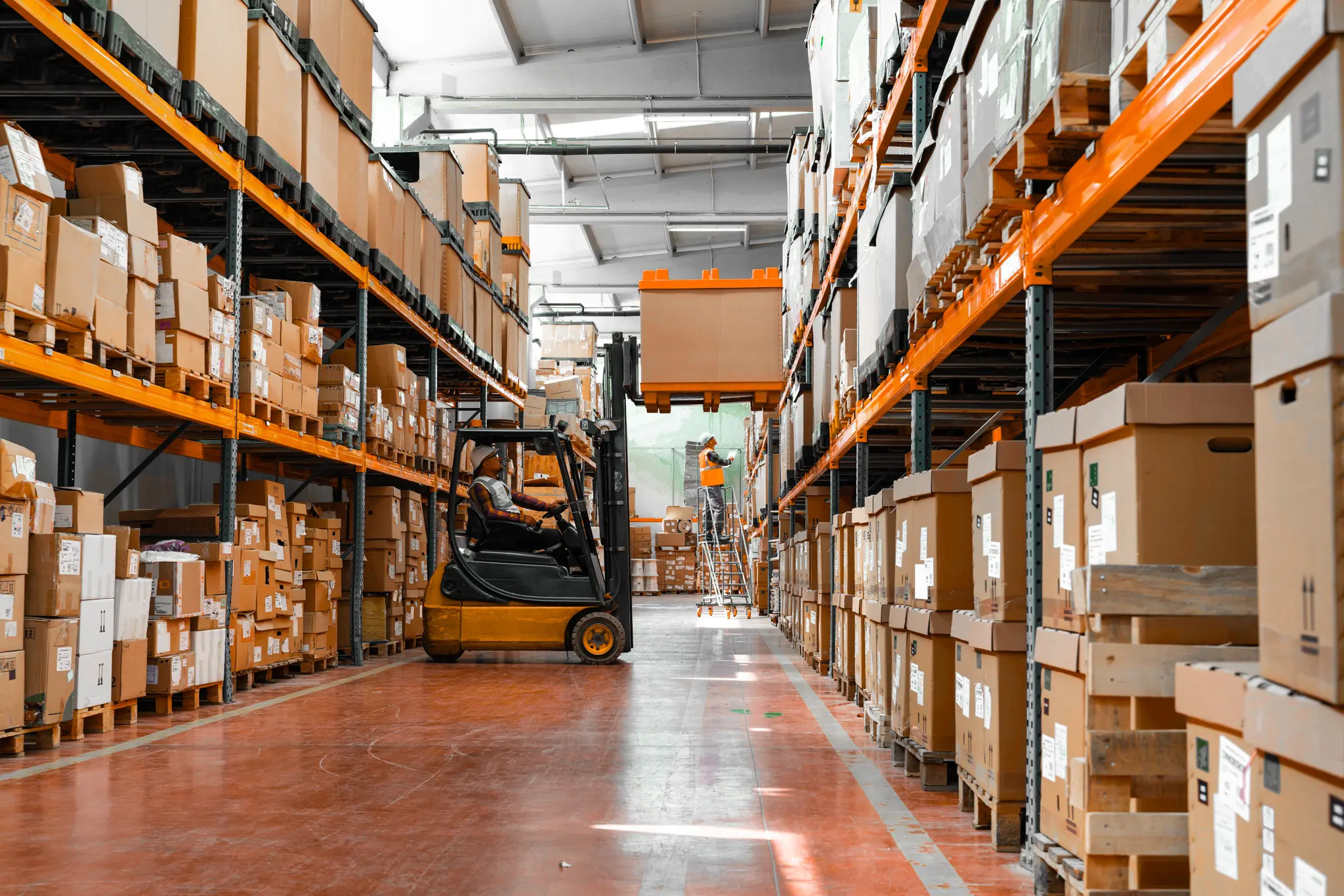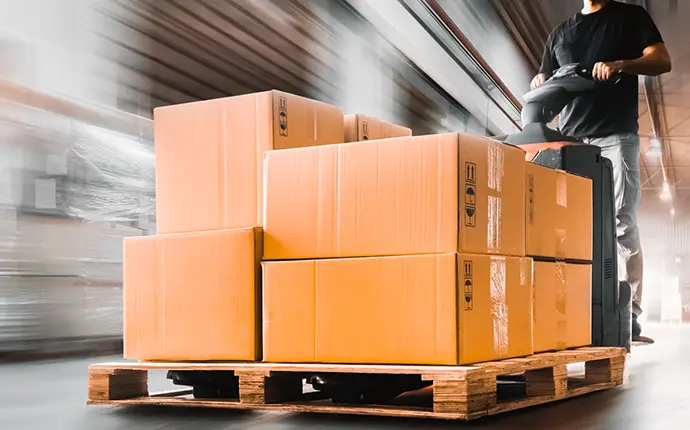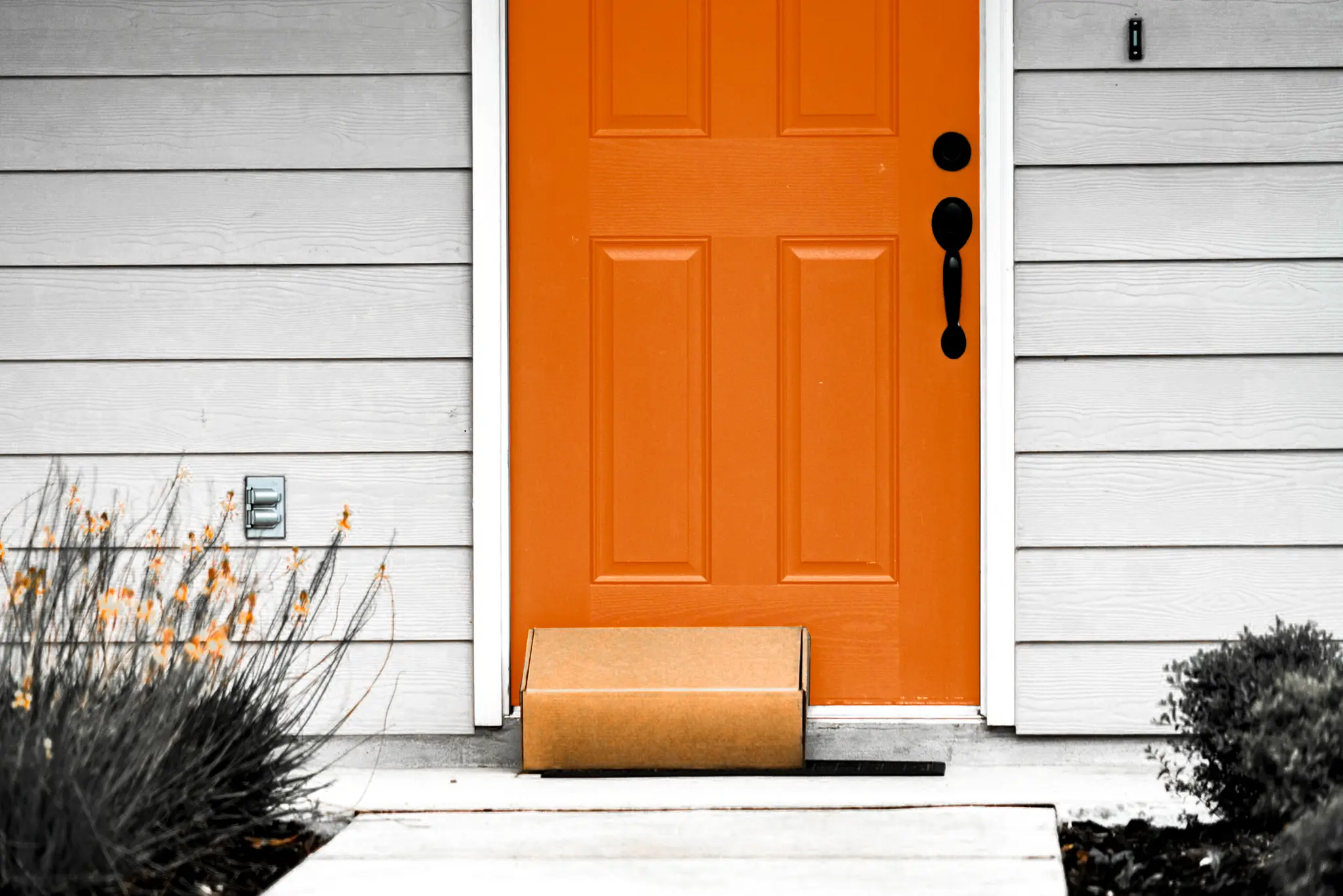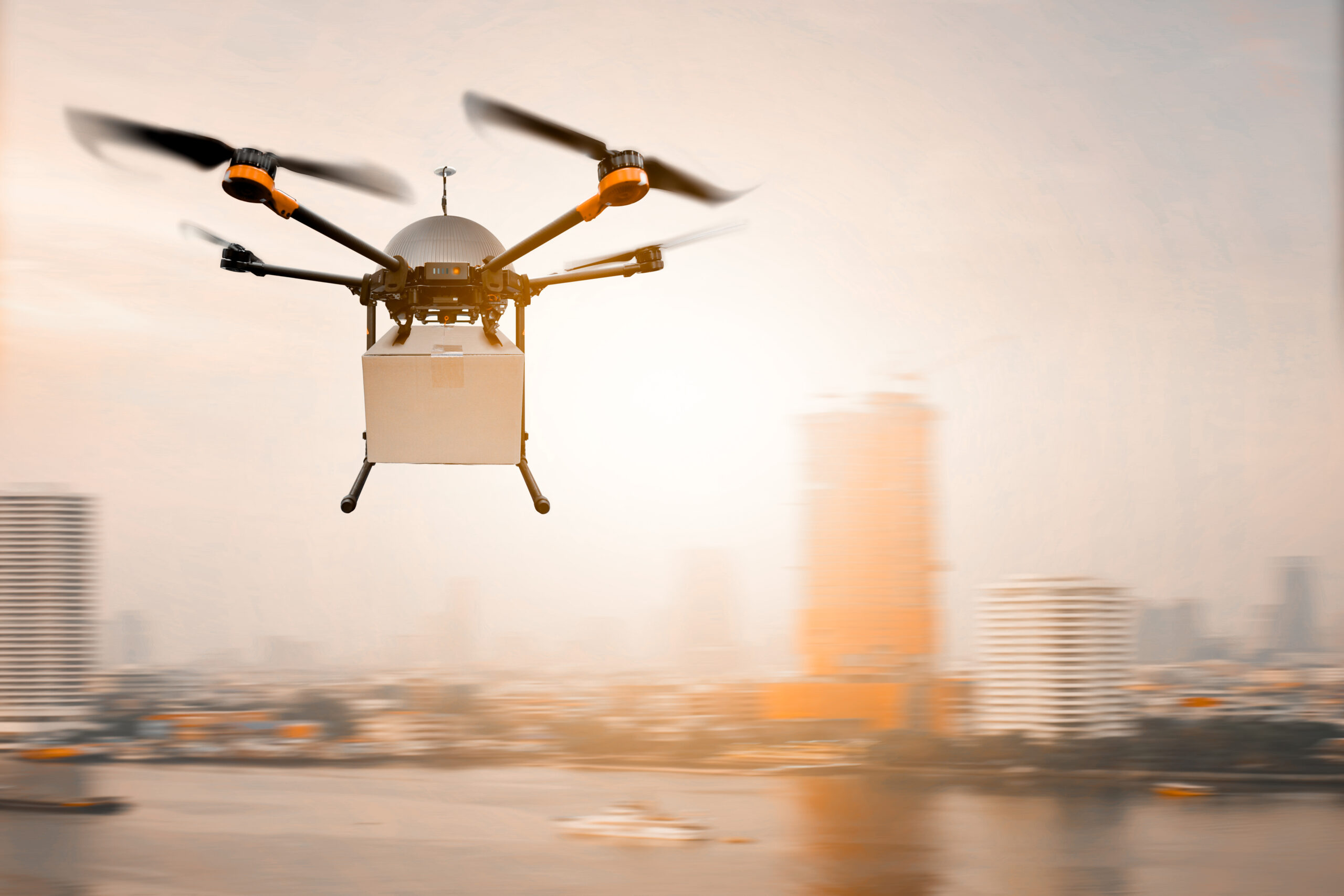Three words you never want to overlook in shipping: Last mile delivery.
It’s a CRITICAL step in the supply chain for businesses that generate high demand for speedy delivery.
I.E. anyone running an eCommerce business.
Because as the eCommerce bomb explodes and shifts the industry, one thing has become obvious to shippers everywhere. Customers want reliable, consistent, and FAST delivery.
To meet those demands, you need top-notch last mile logistics. Or you’ll get left behind.
What is last-mile delivery?
The moment your customer gets a tracking number for their order, and the tracker says ‘out for delivery’ = that’s last-mile delivery.
It’s the last (and the most expensive) step of the shipping process.
In fact, over 50% of shipping expenses come from the labor, warehousing, fleet, and route optimization costs during last-mile delivery. So finding ways to reduce these costs comes down to how efficient your last mile logistics are. (Did someone say data?)
Last mile delivery is also the key to customer satisfaction and brand loyalty. Because the customer’s experience during this stage will determine their relationship/loyalty.
How the pandemic affected last mile delivery
In short? Too much growth, too fast. Everyone is just trying to keep up. (Except you, Amazon)
Why? eCommerce saw an increase in sales by over 55% in 2020 alone – growth typically expected during a five to ten-year timeframe – but accomplished in just months.
On top of that, over 90% of last mile delivery growth stemmed from eCommerce expansion.
So to keep up with market trends, businesses need to stand out. But that’s easier said than done.
What are the challenges with last-mile delivery?
A lot can happen from when a package is “out for delivery” to when it’s delivered.
Sometimes it takes forever due to multiple drop points or other delays in the delivery process. That’s an issue for customers.
Thanks to the Amazon Effect/eCommerce boom, customer expectations for last mile delivery speed, convenience, and costs have become grossly elevated.
This boom skyrockets existing challenges for online retailers and logistics providers to a new level.
Challenges like:
- Price/Cost – Last mile delivery is the most expensive step of the transportation process due to fuel, labor, and other transportation costs. Plus, the reality of “free shipping” is that customers are unwilling to foot a delivery fee, forcing retailers and logistics partners to shoulder the cost of “free” shipping. (Hint: there’s no such thing as free shipping)
- Speed – Same-day, two-day, and other Amazon delivery options are becoming extremely popular and expected by customers. (However, customers aren’t always open to spending 5 to 10 more dollars for faster delivery, making speed always second to price)
- Transparency – Customers have access to everything at their fingertips. They expect the same of their tracking information. That means more than just a tracking number – but precise and real-time live tracking so they know where their package is and more importantly, when it will be delivered.
- Efficiency – Because of the sheer volume of parcels that need to be delivered, carrier services require a massive fleet of vehicles driven by personnel required to be efficient and effective. Couple that with a driver labor shortage, and it’s a recipe for violent shipping problems.
What about fulfillment challenges?
If your business operates in conjunction with a fulfillment center, you already understand that sometimes challenges can be out of your control.
During the fulfillment process, last mile delivery involves independent 3PL’s who manage warehouse inventory and the handoff to shipping carriers.
The speed and efficiency of this process are dependent entirely on factors outside of shippers’ control. Things like:
- Transportation/delivery routes and deliveries assigned per route
- Frequency of carrier order pick-ups
- Size and capacity of the third-party logistics partner
- Hint: Good 3PLs will have an expansive network of distribution center locations at your disposal
- Frequency of orders purchased and packed per day
- Geographical proximity of fulfillment centers to delivery points
- Location of the fulfillment center (urban or rural)
- Rural drop-offs have plenty of distance between each delivery
- Urban traffic congestion offsets any benefits of deliveries near each other
Due to the eCommerce boom, every company is racing to sell online. Resulting in multiples of products out there — leaving customers looking for other ways to differentiate your products from competitors. (Like your delivery options)
Your product isn’t the only way to stand out.
Enter fulfillment – specifically eCommerce fulfillment – as THE prime way for any business to stand out with their last mile delivery service.
Why is last mile delivery important
Online shopping is the future. So is instant gratification.
The results are customers that set high (and sometimes impossible) expectations for retailers and shippers to deliver faster and cheaper – at top quality.
We call it fast mile delivery.
Because eCommerce is taking over brick and mortar establishments to slowly represent the majority of all retail sales, fulfillment and last mile delivery have become a critical aspect of your shipping profile, brand, and logistics/carrier relationships.
And for eCommerce players looking to scale their online sales and business, it’s time to improve your operations and service mix and solve the problems associated with your last mile delivery.
How to prioritize your last mile delivery experience
NOW is the time to invest in your customer experience.
From click to delivery, you must give customers the best possible buying experience to obtain their purchase and loyalty.
That means reviewing EACH stage of the customer’s journey and optimizing. Especially the final stage of last mile delivery/ post-purchase.
Why? Over 86% of customers stated that the post-purchase experience was fundamental to their decision to purchase again. It’s that important.
If you want to give your customers reliable, premium, and fast delivery service options, put these at the forefront when choosing your last mile delivery service:
- Delivery Speed: How fast can you guarantee delivery, and will it be affordable? High demand will come your way if you’re fast AND efficient.
- Security/Insurance: Boost your customer trust rating by offering security and reliability through insurance options for packages. Help them feel safe with your protection promise.
- Precise and accurate package tracking: Will your customers be able to follow the tracking and see potential delivery arrival?
- Convenience – Apps, delivery lockers, and alternative delivery destination options. Do you offer in-store pick-up or curbside delivery?
- Unique specialization – What sets you apart from competitors? What special offerings do you have outside of “free” shipping? For example, can you offer multiple delivery options?
Top trends in last mile delivery
1. Crowdsourcing and gig economy
Uber for your parcel delivery! Wait?
eCommerce growth has created an innovation monster, where retailers are trying anything possible to stay afloat and scale.
Enter Crowdsourced delivery and gig delivery.
This new fulfillment method leverages networks of local, non-professional carriers to deliver packages to customers (most commonly seen in food and meal delivery.) Crowdsourcing allows shippers to cut costs and maximize supply chain efficiency – especially for same and two-day deliveries.
A crowdsourced delivery model drastically reduces out-of-pocket shipping costs.
Plus, customers have the flexibility to schedule deliveries, and GPS/telematics (vehicle monitoring) devices allow for instant package tracking.
Challenges: Rural areas are hard to get covered service, and crowdsourcing is associated with less efficiency than a traditional carrier.
2. Self driving vehicles or robotic driving
Stay with us now! Have you heard of the new Amazon Scout? It’s a robotic delivery offering from Amazon – to make last mile delivery easier. (We admit, it’s kinda cool)
In addition to their robots, Amazon has also invested well over 500 billion dollars in an autonomous vehicle company to make deliveries 24/7. Without drivers, Amazon hopes to significantly curb costs for labor and shifts and make deliveries faster. (Think 24 hours for all their product offerings)
And where Amazon goes, people will follow.
For these and other reasons, a growing number of eCommerce retailers are starting to experiment with robotic and drone delivery – should you think about joining them?
3. Warehouse expansion
Another way Amazon stays ahead of the competition is through its sheer mass in numbers.
They have warehouses for fulfillment and distribution across the country, allowing them to deliver and fulfill orders faster than anyone else.
Catch our drift?
- Have you thought about opening a warehouse in an urban setting to reach more customers?
- Do you need a more rural location to expand your delivery options?
4. Real time package tracking
Customers are used to having all the information they need/want at their fingertips. Now, customers want to track their package AND see its predicted delivery.
But what if your customers could see the exact location of their package with precise accuracy? Even better – what if your customers could track the environmental conditions their package is being delivered in? (Think time-sensitive materials like food or medication)
They can when you use smart technology like GPS and RFID tags to track shipments.
How? Embedding sensors in your packages to monitor levels of gas, temperature, humidity, and pressure – among other things.
This level of visibility and transparency improves customer satisfaction by providing features they already desire.
And as a bonus, these sensors are accessible to the shippers/retailers to better monitor their shipments for weather patterns, delivery routes, and last-mile delivery efficiency.
How to enhance your last mile delivery
When one aspect of your business process accounts for over 50% of your entire spend, it pays (literally) to improve its process and optimization.
Last mile delivery NEEDS to be at the forefront of your 2022 supply chain improvement plan. Not just to ensure a smooth customer experience, boost efficiency, and scale your business, but to save some pennies!
Where do you start? How do you implement these trends? By understanding what your data is telling you – and where improvements need to be made.
We can help with that. Ditch your spreadsheet search and try a free demo of Sifted today.











